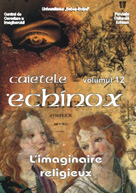The k‛ou-t‛ou, a political and religious ceremonial at the court of the Ch'ing dynasty. Brief note about the Milescu - K'ang-hsi case (June 1676)
The k‛ou-t‛ou, a political and religious ceremonial at the court of the Ch'ing dynasty.Brief note about the Milescu - K'ang-hsi case (June 1676)
Author(s): Daniela DumbravăSubject(s): Cultural history
Published by: Universitatea Babeş-Bolyai
Keywords: China; Confucianism; Ch'ing tributary system; Sino-European diplomacy; court rituals; Nicolae Milescu
Summary/Abstract: The paper makes use of a seventeenth-century European source which might be seen as giving direct evidence of Manchu court rituals, and of their diplomatic customs. As a matter of fact, in the 16th and 17th century European cultural perception, Eastern Asian civilization was still of a fabulous nature. K’ang-hsi had political relations with the Russians, one of the most powerful Empires at the end of the seventeenth century. It was in 1689 at Nerčinsk that the Asiatic Empire signed a peace treaty with a European power. Before that, the Manchu Emperor had met one of the first Ambassadors of the Tsar Aleksej Michajlovič in China, the Moldavian literate (notably the first translator of the Septuagint in Walachia), Nicolae Milescu Spătarul (1636-1708) and granted him an official audience (1676). Before performing the requisite ritual, Milescu, as a diplomat, questioned its religious connotation, more specifically the religious implication of the k‛ou-t‛ou or kowtow, causing a lot of problems.
Journal: Caietele Echinox
- Issue Year: 2007
- Issue No: 12
- Page Range: 300-310
- Page Count: 11
- Language: English
- Content File-PDF

